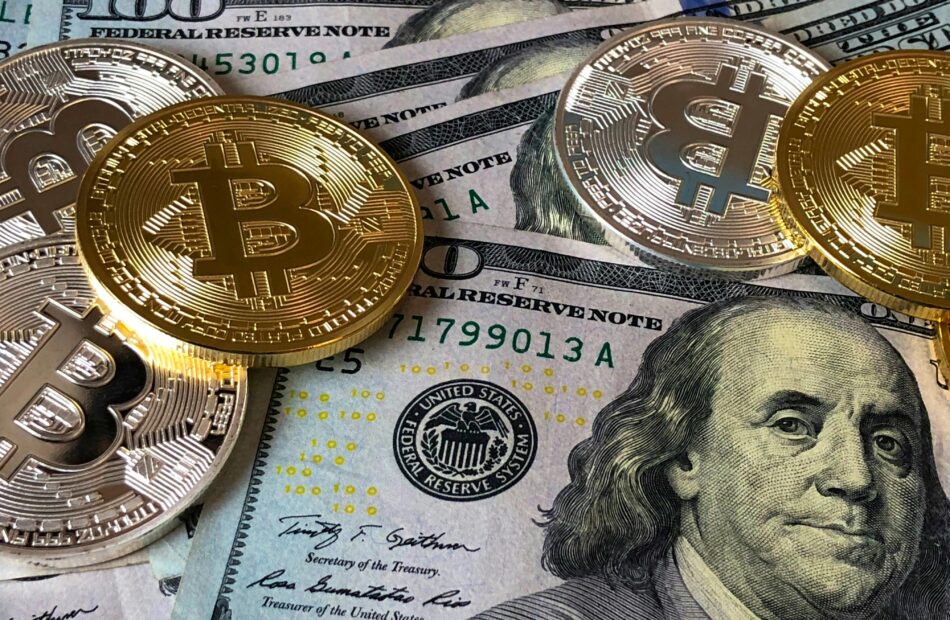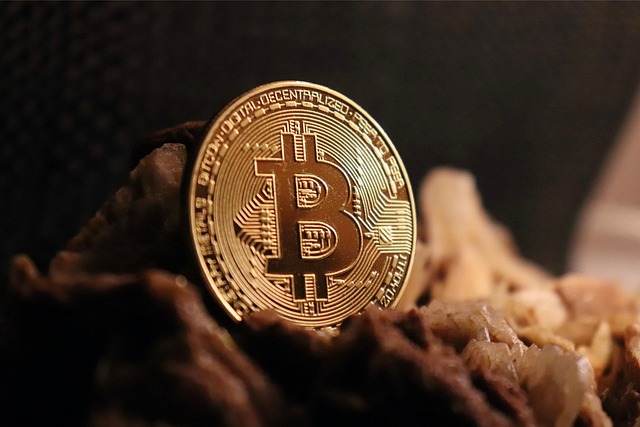Bakkt investors file class-action lawsuit after loss of Webull, BoA contracts
A group of investors with cryptocurrency custody and trading firm Bakkt Holdings filed a class-action lawsuit alleging false or misleading statements and a failure to disclose certain information.Lead plaintiff Guy Serge A. Franklin called for a jury trial as part of a complaint against Bakkt, senior adviser and former CEO Gavin Michael, CEO and president Andrew Main, and interim chief financial officer Karen Alexander, according to an April 2 filing in the US District Court for the Southern District of New York.The group of investors allege damages as the result of violations of US securites laws and a lack of transparency surrounding its agreement with clients: Webull and Bank of America (BoA).April 2 complaint against Bakkt and its executives. Source: PACERThe loss of Bank of America and Webull will result “in a 73% loss in top line revenue” due to the two firms making up a significant percentage of its services revenue, the investor group alleges in the lawsuit. The filing stated Webull made up 74% of Bakkt’s crypto services revenue through most of 2023 and 2024, and Bank of America made up 17% of its loyalty services revenue from January to September 2024.Related: Bakkt names new co-CEO amid re-focus on crypto offeringsBakkt disclosed on March 17 that Bank of America and Webull did not intend to renew their agreements with the firm ending in 2025. The announcement likely contributed to the company’s share price falling more than 27% in the following 24 hours. The investors allege Bakkt “misrepresented the stability and/or diversity of its crypto services revenue” and failed to disclose that this revenue was “substantially dependent” on Webull’s contract.“As a result of Defendants’ wrongful acts and omissions, and the precipitous decline in the market value of the Company’s securities, Plaintiff and other Class members have suffered significant losses and damages,” said the suit.Other law offices said they were investigating Bakkt for securities law violations, suggesting additional class-action lawsuits may be in the works. Cointelegraph contacted Bakkt for a comment on the lawsuit but did not receive a response at the time of publication.Prices affected by Trump Media reportsBakkt’s share price surged roughly 162% in November 2024 after reports suggested that then-US President-elect Donald Trump’s media company was considering acquiring the firm. As of April 2025, neither company has officially announced a deal.Shares in Bakkt (BKKT) were $8.15 at the time of publication, having fallen more than 36% in the previous 30 days.Magazine: Meet lawyer Max Burwick — ‘The ambulance chaser of crypto’
Crypto market bottom likely by June despite tariff fears: Finance Redefined
Despite growing tariff-related uncertainty, there is a 70% probability cryptocurrency markets will find the local bottom in the next two months, which will serve as the supporting foundation for the next leg up in the 2025 cycle, according to Nansen analysts.Savvy traders continue making generational wealth despite growing volatility and lack of risk appetite. One unidentified trader turned an initial $2,000 investment into over $43 million by trading the popular frog-themed memecoin, Pepe.70% chance of crypto bottoming before June amid trade fears: NansenThe cryptocurrency market may see a local bottom in the next two months amid global uncertainty over ongoing import tariff negotiations, which have been limiting investor sentiment in both traditional and digital markets.US President Donald Trump on April 2 announced reciprocal import tariffs, measures aimed at reducing the country’s estimated trade deficit of $1.2 trillion in goods and boosting domestic manufacturing. While global markets took a hit from the first tariff announcement, there is a 70% chance for cryptocurrency valuations to find their bottom by June, according to Aurelie Barthere, principal research analyst at the Nansen crypto intelligence platform.The research analyst told Cointelegraph:“Nansen data estimates a 70% probability that crypto prices will bottom between now and June, with BTC and ETH currently trading 15% and 22% below their year-to-date highs, respectively. Given this data, upcoming discussions will serve as crucial market indicators.”She added: “Once the toughest part of the negotiation is behind us, we see a cleaner opportunity for crypto and risk assets to finally mark a bottom.”Continue readingCrypto trader turns $2,000 of PEPE into $43 millionA savvy cryptocurrency trader reportedly turned $2,000 into more than $43 million by investing in the memecoin Pepe at its peak valuation, despite the token’s extreme volatility and lack of underlying technical value.The trader made an over 4,700-fold return on investment on the popular frog-themed Pepe (PEPE) cryptocurrency, according to blockchain intelligence platform Lookonchain.“This OG spent only $2,184 to buy 1.5T $PEPE($43M at the peak) in the early stage. He sold 1.02T $PEPE for $6.66M, leaving 493B $PEPE($3.64M), with a total profit of $10.3M(4,718x), Lookonchain wrote in a March 29 X post.Source: LookonchainThe trader realized over $10 million in profit despite Pepe’s price falling over 74% from its all-time high of $0.00002825, reached on Dec. 9, 2024, Cointelegraph Markets Pro data shows.PEPE/USD, all-time chart. Source: Cointelegraph Markets ProMemecoins are considered some of the most speculative and volatile digital assets, with price action driven largely by online enthusiasm and social sentiment rather than fundamental utility or innovation.Still, they’ve proven capable of generating life-changing returns. In May 2024, another early Pepe investor turned $27 into $52 million — a 1.9 million-fold return — according to onchain data.Continue reading$1 trillion stablecoin supply could drive next crypto rally — CoinFund’s PakmanThe global stablecoin supply may surge to $1 trillion by the end of 2025, potentially becoming a key catalyst for broader cryptocurrency market growth, according to David Pakman, managing partner at crypto-native investment firm CoinFund.“We’re in a stablecoin adoption upswell that’s likely to increase dramatically this year,” Pakman said during Cointelegraph’s Chainreaction live show on X on March 27. “We could go from $225 billion stablecoins to $1 trillion just this calendar year.”He noted that such growth, while modest compared to global financial markets, would represent a “meaningfully significant” shift for blockchain-based finance.Pakman also suggested that the rise in capital flowing onchain, combined with growing interest in exchange-traded funds (ETFs), could further support decentralized finance (DeFi) activity:“If we have a moment this year where ETFs are permitted to provide staking rewards or yield to holders, that unlocks really meaningful uplift in DeFi activity, broadly defined.”https://t.co/v9lOnk00QY— Cointelegraph (@Cointelegraph) March 27, 2025Continue readingAvalanche stablecoins up 70% to $2.5 billion; AVAX demand lacks DeFi deploymentAvalanche saw a significant surge in stablecoin supply over the past year, but the onchain deployment of this capital points to passive investor behavior, which may be limiting demand for the network’s utility token.The stablecoin supply on the Avalanche network rose by over 70% over the past year, from $1.5 billion in March 2024 to over $2.5 billion as of March 31, 2025, according to Avalanche’s X post.Market capitalization of stablecoins on Avalanche. Source: AvalancheStablecoins are the main bridge between the fiat and crypto world, and increasing stablecoin supply is often seen as a signal for incoming buying pressure and growing investor appetite.However, Avalanche’s (AVAX) token has been in a downtrend, dropping nearly 60% over the past year to trade just above $19 despite the $1 billion increase in stablecoin supply, Cointelegraph Markets Pro data shows.AVAX/USD,1-year chart. Source: Cointelegraph Markets Pro“The apparent contradiction between surging stablecoin value on Avalanche and AVAX’s significant price decline likely stems from how that stablecoin liquidity is being held,” according to Juan Pellicer, senior research analyst at IntoTheBlock crypto intelligence platform.Continue readingDeFi TVL falls 27% while AI, social apps surge in Q1: DappRadarEconomic uncertainty and a major crypto exchange hack pushed down the total value locked in decentralized finance (DeFi) protocols to $156 billion in the first quarter of 2025, but AI and social apps gained ground with an increase in network users, according to a crypto analytics firm.“Broader economic uncertainty and lingering aftershocks from the Bybit exploit” were the main contributing factors to the DeFi sector’s 27% quarter-on-quarter fall in TVL, according to an April 3 report from DappRadar, which noted that the price of Ether (ETH) fell 45% to $1,820 over the same period.Change in DeFi total value locked between Jan. 2024 and March 2025. Source: DappRadarThe largest blockchain by TVL, Ethereum, fell 37% to $96 billion, while Sui was the hardest hit of the top 10 blockchains by TVL, falling 44% to $2 billion.Solana, Tron and the Arbitrum blockchains also saw their TVLs slashed over 30%.Meanwhile, blockchains that experienced a larger volume of DeFi withdrawals and had a smaller share of stablecoins locked in their protocols faced extra pressure on top of the falling token prices.The newly launched Berachain was the only top-10 blockchain by TVL to rise, accumulating $5.17 billion between Feb. 6 and March 31, DappRadar noted.Continue readingDeFi market overviewAccording to data from Cointelegraph Markets Pro and TradingView, most of the 100 largest cryptocurrencies by market capitalization ended the week in the red.The Pi Network (PI) token fell over 34%, logging the week’s biggest decline, followed by the Berachain (BERA) token, down nearly 30% on the weekly chart.Total value locked in DeFi. Source: DefiLlamaThanks for reading our summary of this week’s most impactful DeFi developments. Join us next Friday for more stories, insights and education regarding this dynamically advancing space.
Grayscale files S-1 to list Solana ETF on NYSE
Digital asset manager Grayscale registered with the United States Securities and Exchange Commission (SEC) to list the Grayscale Solana (SOL) Trust exchange-traded fund (ETF) on the New York Stock Exchange (NYSE).The ETF will trade under the ticker symbol “GSOL” and will hold spot SOL as the underlying asset, according to the April 4 S-1 filing.Grayscale announced plans to convert its existing Grayscale Solana Trust into an ETF in its 19b-4 application filed with the SEC in December 2024.The filing is among several crypto ETF applications in the United States following a regulatory shift in Washington DC, and Solana is widely expected to be the next digital asset ETF approved by the SEC.Grayscale Solana Trust ETF S-1 registration form. Source: SECRelated: Grayscale files S-3 for Digital Large Cap ETFSolana price slumps despite Trump’s attentionUS President Donald Trump in March announced the inclusion of SOL in the country’s first crypto reserve, alongside Bitcoin (BTC), Ether (ETH), XRP (XRP), and Cardano’s native token ADA (ADA). Digital assets held in the reserve will be acquired through asset forfeiture and may not significantly contribute to demand for SOL or price appreciation.”A US Crypto Reserve will elevate this critical industry after years of corrupt attacks by the Biden Administration” and include “made in America” cryptocurrencies, Trump wrote in a March 2 Truth Social post.Following the announcement, SOL’s price declined to multi-week lows and is down approximately 60% since its all-time high of $295 recorded in January 2025.SOL’s negative price performance reflects a broader downturn in the crypto markets brought on by fears of a prolonged trade war and the Trump administration’s tariff policies.SOL has preformed poorly amid trade war fears and a broader downturn in risk-on markets. Source: TradingViewRisk-on assets tend to suffer during trade wars as investors flee volatile asset classes for more stable alternatives such as cash and government bonds.The approval of a Solana ETF could mitigate this price decline by giving traditional financial investors exposure to SOL and funneling capital from the stock market into the altcoin.Fresh investment capital pouring into SOL may prop up prices during general market downturns, making the altcoin more resilient to price shocks than digital assets lacking traditional investment vehicles.Magazine: Solana ‘will be a trillion-dollar asset’: Mert Mumtaz, X Hall of Flame
PayPal, Venmo to roll out Solana, Chainlink transfers
Global payments platform PayPal has expanded its cryptocurrency offerings to include Chainlink (LINK) and Solana (SOL), giving US-based users the ability to buy, sell and transfer the popular tokens. Support for LINK and SOL will be rolled out over the next few weeks and will also be extended to users of Venmo, a US mobile payment platform owned by PayPal, the company disclosed on April 4. Source: CointelegraphRoughly 83 million people used Venmo at least once in 2023, according to the latest available information from PayPal. PayPal’s global reach extends to roughly 428 million accounts as of December, the majority of which are in the United States. The company’s crypto services are available only to US residents. PayPal is expanding its crypto offerings in response to growing consumer demand, according to May Zabaneh, an executive in PayPal’s crypto and blockchain division.“Offering more tokens on PayPal and Venmo provides users with greater flexibility, choice, and access to digital currencies,” she said.PayPal’s US crypto offerings now include seven digital assets in total, including its payment stablecoin PayPal USD (PYUSD).Related: Tabit offers USD insurance policies backed by Bitcoin regulatory capitalPayPal’s stablecoin pushThe launch of PYUSD in 2023 solidified PayPal’s entry into the cryptocurrency market. Roughly one year after its launch, PYUSD surpassed $1 billion in total market capitalization for the first time. Since then, PYUSD’s circulating supply has fallen to around $760 million, according to industry data. PayPal’s US dollar-pegged stablecoin peaked at a market cap of more than $1 billion in August 2024. Source: DefiLlamaTo demonstrate the utility of PYUSD, PayPal settled an invoice with global consulting firm Ernst & Young in October for an undisclosed amount. At the time, PayPal’s senior vice president of blockchain, Jose Fernandez da Ponte, said “The enterprise environment is very well-suited” for stablecoin payments. Despite PYUSD’s modest circulating supply compared to stablecoin leaders USDt (USDT) and USDC (USDC), the company’s involvement in the sector cannot be understated, according to Polygon Labs CEO Marc Boiron.In an interview with Cointelegraph, Boiron credited companies like PayPal and Stripe for catalyzing stablecoin adoption at a time when regulators and enterprises were still uncertain about the technology. Magazine: Unstablecoins: Depegging, bank runs and other risks loom
Bitcoin sentiment falls to 2023 low, but ‘risk on’ environment may emerge to spark BTC price rally
Bitcoin (BTC) sits in one of its least bullish phases since January 2023. According to Bitcoin’s “bull score index,” investor sentiment is showing its lowest reading in two years. Bitcoin bull score index. Source: CryptoQuantCryptoQuant’s “Crypto Weekly Report” newsletter explained that “bull score index” readings that sit below 40 for extended periods increase the likelihood of a bear market. The bull score remained above 40 throughout 2024, only dipping below this threshold in February 2025, as identified in the chart above. However, over the past 24 hours, Bitcoin price has displayed resilience when compared against the massive losses seen in the US stock market. On April 3, Bitcoin closed the day with a green candle, while the S&P 500 was down 4.5%, a historic first. The S&P 500 and Dow Jones extended their decline on April 4, dropping 3.87% and 3.44%, respectively, while Bitcoin held steady near the breakeven point. Related: Arthur Hayes loves tariffs as printed money pain is good for BitcoinIs Bitcoin near a risk-on phase?Data from CryptoQuant indicates that Bitcoin’s Value Days Destroyed (VDD) metric currently sits around 0.72, suggesting that Bitcoin price is in a transitional phase. Since 2023, such periods have preceded either price consolidation or renewed accumulation before a bullish breakout.Bitcoin value days destroyed. Source: CryptoQuantThe Bitcoin VDD metric tracks the movement of long-term held coins, and it has signaled a notable market trend since late 2024. The metric peaked at 2.27 on Dec. 12, signaling aggressive profit-taking and this dynamic matched the highs seen in 2021 and 2017. However, VDD dropped to 0.65 in April, reflecting a cooling-off period where profit-taking has subsided. This opens the possibility of a “risk-on” market for Bitcoin. In financial terms, a “risk-on” scenario occurs when investors embrace higher-risk assets like cryptocurrencies, often driven by optimism and mean reversions in trends. Amid ongoing market uncertainty that has been fueled by the US-led trade war, Bitcoin could unexpectedly gain from these tense conditions. Speaking on Bitcoin and the crypto market’s potential as a hedge against traditional market volatility, crypto trader Jackis said, “A reminder, this is not a crypto-driven drop but an overall risk-on, tariff, trade war-driven drop. While all of that is unfolding, it seems that crypto has likely undergone most of its downside already and has been lately absorbing all of the selling well.”Similarly, the Crypto Fear & Greed Index also exhibited a “fear” category with a score of 28 on April 4. The index registered an “extreme fear” score of 25 on April 3, suggesting that the current price may present a compelling buying opportunity.Crypto Fear & Greed Index. Source: alternative.meRelated: 10-year Treasury yield falls to 4% as DXY softens — Is it time to buy the Bitcoin price dip?This article does not contain investment advice or recommendations. Every investment and trading move involves risk, and readers should conduct their own research when making a decision.
Bitcoin crash risk to $70K in 10 days increasing — Analyst says it’s BTC’s ‘practical bottom’
Analysts say Bitcoin (BTC) price could drop to $70,000 within the next ten days as one BTC pricing model suggests that the US-led trade war could upend investors’ risk-asset sentiment.In his latest X analysis, network economist Timothy Peterson warned that Bitcoin may return to its 2021-era all-time high.$70,000 is Bitcoin’s “practical bottom”Bitcoin price expectations continue to deteriorate as the impact of “higher than expected” US trade tariffs hits home.For Peterson, the outlook now includes an uncomfortable trip down memory lane.“Bitcoin to $70k in 10 days?” he queried.An accompanying chart compared Bitcoin bear markets and included Peterson’s Lowest Price Forward (LPF) metric — a historically accurate yardstick for gauging long-term BTC price bottoms.“While this chart is not a prediction, it does provide data-driven expectations for what Bitcoin could do,” he continued. “If it continues to track along the 75th percentile bear market range, then 70k would be the practical bottom.”Bitcoin bear market comparison with LPF data. Source: Timothy Peterson/XPeterson noted that the theory ties in with current LPF data, which last month said that BTC/USD was 95% certain to preserve the 2021 highs as support. Prior to that, the metric successfully delivered a $10,000 price floor in mid-2020, with Bitcoin never again dropping below it after September that year.Continuing, Peterson revealed probabilities for April which showed BTC price expectations in a state of flux.“Bitcoin went from 75% chance of having a positive month to a 75% chance of having a negative month in just 2 days,” he summarized alongside another proprietary chart.April BTC price expectations. Source: Timothy Peterson/XRelated: Bitcoin sales at $109K all-time high ‘significantly below’ cycle tops — GlassnodeBitcoin’s current price action is “often what a bottom looks like”The bearish outlook of Peterson’s model is far from the only bearish warning coming to light this week.As noted by onchain analytics firm Glassnode, many traders are attempting to shield themselves from further crypto market turmoil.“Puts are trading at a premium to calls, signaling a spike in demand for downside protection. This skew is most pronounced in short-term maturities – a level of fear not seen since $BTC was in the $20Ks in mid-’23,” it revealed in an X thread on April 4.Bitcoin options delta skew. Source: Glassnode/XGlassnode nonetheless acknowledged that while under pressure, current price performance does not constitute a post-tariff capitulation of the sort seen in stocks.“Despite this, $BTC hasn’t broken down like equities did on recent tariff headlines. That disconnect – rising panic without a price collapse – makes the current options market setup especially notable,” it continued.“Skew like this usually appears when positioning is one-sided and fear runs high. TLDR: panic is elevated, but price is holding. That’s often what a bottom looks like.”This article does not contain investment advice or recommendations. Every investment and trading move involves risk, and readers should conduct their own research when making a decision.
Bitcoin bulls defend $80K support as ‘World War 3 of trade wars’ crushes US stocks
Bitcoin (BTC) price dodged the chaotic volatility that crushed equities markets on the April 4 Wall Street open by holding above the $82,000 level.BTC/USD 1-hour chart. Source: Cointelegraph/TradingViewUS stocks notch record losses as analysts predict “long trade war”Data from Cointelegraph Markets Pro and TradingView showed erratic moves on Bitcoin’s lower timeframes as the daily high near $84,700 evaporated as BTC price dropped by $2,500 at the start of the US trading session.Fears over a prolonged US trade war and subsequent recession fueled market downside, with the S&P 500 and Nasdaq Composite Index both falling another 3.5% after the open.S&P 500 1-day chart. Source: Cointelegraph/TradingViewIn ongoing market coverage, trading resource The Kobeissi Letter described the tariffs as the start of the “World War 3” of trade wars.”BREAKING: President Trump just now, “WE CAN’T LOSE!!!”A long trade war is ahead of us. https://t.co/babI1cf5wi pic.twitter.com/6KCsHp0a8v— The Kobeissi Letter (@KobeissiLetter) April 4, 2025“Two-day losses in the S&P 500 surpass -8% for a total of -$3.5 trillion in market cap. This is the largest 2-day drop since the pandemic in 2020,” it reported.The Nasdaq 100 made history the day prior, recording its biggest single-day points loss ever.The latest US jobs data in the form of the March nonfarm payrolls print, which beat expectations, faded into insignificance with markets already panicking.Market expectations of interest rate cuts from the Federal Reserve nonetheless edged higher, with the odds for such a move coming at the Fed’s May meeting hitting 40%, per data from CME Group’s FedWatch Tool.Fed target rate probabilities comparison for May FOMC meeting. Source: CME GroupBitcoin clings to support above $80,000As Bitcoin managed to avoid a major collapse, market commentators sought confirmation of underlying BTC price strength.Related: Bitcoin sellers ‘dry up’ as weekly exchange inflows near 2-year lowFor popular trader and analyst Rekt Capital, longer-timeframe cues remained encouraging.#BTC Bitcoin is already recovering and on the cusp of filling this recently formed CME Gap$BTC #Crypto #Bitcoin https://t.co/ZDvsF6ldCz pic.twitter.com/PSbAESmqnY— Rekt Capital (@rektcapital) April 4, 2025“Bitcoin is also potentially forming the very early signs of a brand new Exaggerated Bullish Divergence,” he continued, looking at relative strength index (RSI) behavior on the daily chart.“Double bottom on the price action meanwhile the RSI develops Higher Lows. $82,400 needs to continue holding as support.”BTC/USD 1-day chart with RSI data. Source: Rekt Capital/XFellow trader Cas Abbe likewise observed comparatively resilient trading on Bitcoin amid the risk-asset rout.“It didn’t hit a new low yesterday despite stock market having their worst day in 5 years,” he noted to X followers. “Historically, BTC always bottoms first before the stock market so expecting $76.5K was the bottom. Now, I’m waiting for a reclaim above $86.5K level for more upward continuation.”BTC/USDT perpetual futures 1-day chart. Source: Cas Abbe/XEarlier, Cointelegraph reported on BTC price bottom targets now including old all-time highs of $69,000 from 2021.This article does not contain investment advice or recommendations. Every investment and trading move involves risk, and readers should conduct their own research when making a decision.
The future of DeFi isn’t on Ethereum — it’s on Bitcoin
Opinion by: Matt Mudano, CEO of Arch Labs Ethereum is struggling, and decentralized finance (DeFi) is suffering as a result. Layer-2 (L2) solutions have fractured liquidity, making capital inefficient. In search of greener pastures, the community has turned to Solana — only to find a memecoin-driven ecosystem fueled by pump-and-dump schemes, attracting liquidity extractors, and turning the chain into a playground for speculation and fraud.DeFi needs a reset that returns to first principles and aligns with Satoshi’s original vision of a decentralized financial system. The only network capable of sustaining the next evolution of DeFi isn’t Ethereum or Solana. It’s Bitcoin.DeFi is struggling on Ethereum Ethereum was once the undisputed home of DeFi, but today, it’s clear that the ecosystem is struggling. The network’s roadmap constantly changes, with no clear path toward long-term sustainability.L2 solutions were supposed to scale Ethereum. Instead, they’ve fractured DeFi into isolated liquidity silos. While L2s have lowered transaction fees, they now compete for liquidity rather than contributing to a unified financial system. The result? A fragmented landscape that makes capital inefficient and DeFi protocols harder to scale.Ethereum’s proposed solution — chain abstraction — sounds promising in theory but fails in practice. The fundamental issue is a structural misalignment of incentives, and as a result, Ethereum is gradually losing its competitive edge in DeFi.It’s time to ask: Can DeFi’s future lie in a fragmented Ethereum?Solana isn’t the answerWith Ethereum losing its competitive edge, many developers and users have turned to Solana. The blockchain has seen an 83% increase in developer activity year-over-year, and its decentralized exchanges (DEXs) have outperformed Ethereum’s for five consecutive months. There’s a fundamental problem: Solana’s DeFi growth isn’t built on sustainable financial applications — a memecoin frenzy fuels it.The recent surge in activity isn’t driven by innovation in decentralized finance but by speculative trades. Following the TRUMP memecoin craze, the total extracted value from Solana’s memecoins ranged between $3.6 billion and $6.6 billion. This isn’t DeFi growth — it’s a liquidity extraction engine where short-term speculators cash in and move on.Solana has real strengths. Its speed and low transaction costs make it ideal for high-frequency trading, and its ecosystem has made meaningful strides in decentralized physical infrastructure networks (DePINs), AI and decentralized science, or DeSci. But the dominance of memecoin speculation has turned the chain into a playground for fraud and pump-and-dump schemes. That’s not the foundation DeFi needs.Solana isn’t the answer if the goal is to build a lasting financial system.Bitcoin DeFi is thrivingIt’s time to return to first principles and build DeFi on the original blockchain: Bitcoin — the most trusted, decentralized network backed by the soundest money in the digital economy.This is not just theoretical. Bitcoin DeFi is already experiencing explosive growth. Consider the numbers: Total value locked (TVL) in Bitcoin DeFi surged from $300 million in early 2024 to $5.4 billion as of Feb. 28, 2025 — a staggering 1,700% increase. The Bitcoin staking sector is dominating, with protocols like Babylon ($4.68 billion TVL), Lombard ($1.59 billion) and SolvBTC ($715 million) leading the charge. This demonstrates the growing demand for Bitcoin to become a productive asset rather than a passive store of value.Recent: Bitcoin DeFi takes center stageBitcoin-native DeFi isn’t simply copying Ethereum’s playbook — it’s pioneering new financial models. Advancements in the space have introduced dual staking, allowing users to stake Bitcoin (BTC) alongside native tokens to enhance security and earn yields. Meanwhile, novel approaches to tokenizing Bitcoin’s hashrate turn mining power into collateral for lending, borrowing and staking, further expanding Bitcoin’s financial utility.In addition, Ordinals and BRC-20 tokens have driven record-high transaction activity, with inscriptions reaching 66.7 million and generating $420 million in fees — highlighting the growing demand for tokenized assets on Bitcoin.It is clear that Bitcoin is no longer just digital gold — it’s becoming the foundation for the next phase of decentralized finance.The future of DeFi is on BitcoinThe future of DeFi lies with Bitcoin, where incentives align with long-term value creation. Unlike Ethereum’s fragmented model and Solana’s speculative economy, Bitcoin-based DeFi is built on institutional-grade liquidity and sustainable growth.As the largest and most liquid crypto asset, Bitcoin boasts a $1.7 trillion market cap and $94 billion in exchange-traded fund (ETF) holdings. Even a fraction of this liquidity migrating into DeFi would be a game-changer. Bitcoin holds over $1 trillion in untapped liquidity and continues to attract strong interest from institutional investors and sovereign wealth funds, with governments already exploring it as a potential reserve asset.Several projects are already building on Bitcoin, building a sustainable ecosystem where users can hold the most trusted digital asset while making it productive through DeFi mechanisms. Ethereum had its moment. Solana had its hype. It’s Bitcoin’s turn to actualize Satoshi’s original vision of a decentralized financial system.Opinion by: Matt Mudano, CEO of Arch Labs.This article is for general information purposes and is not intended to be and should not be taken as legal or investment advice. The views, thoughts, and opinions expressed here are the author’s alone and do not necessarily reflect or represent the views and opinions of Cointelegraph.








